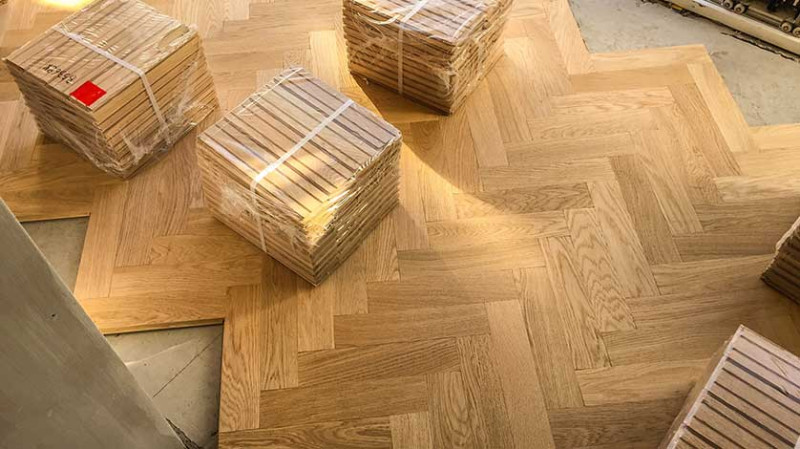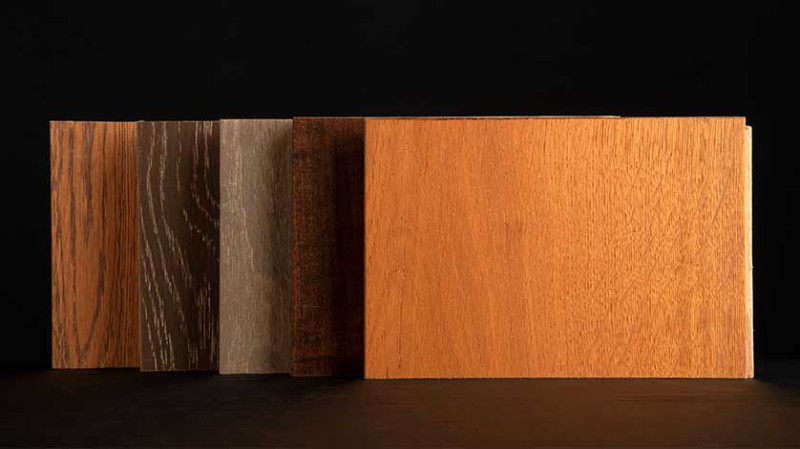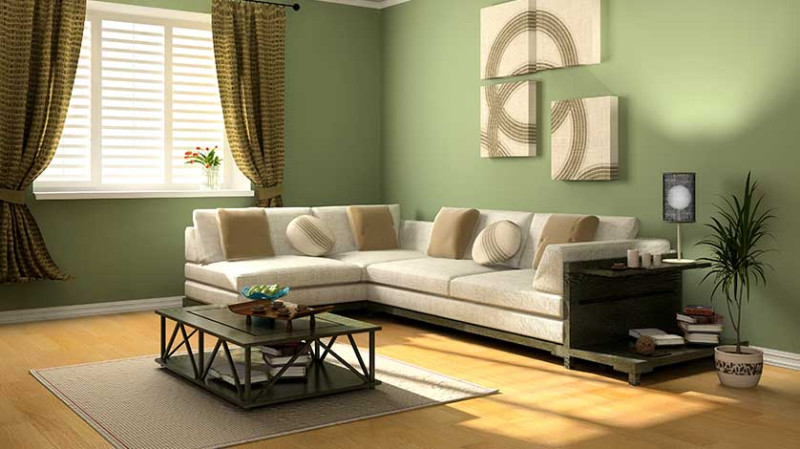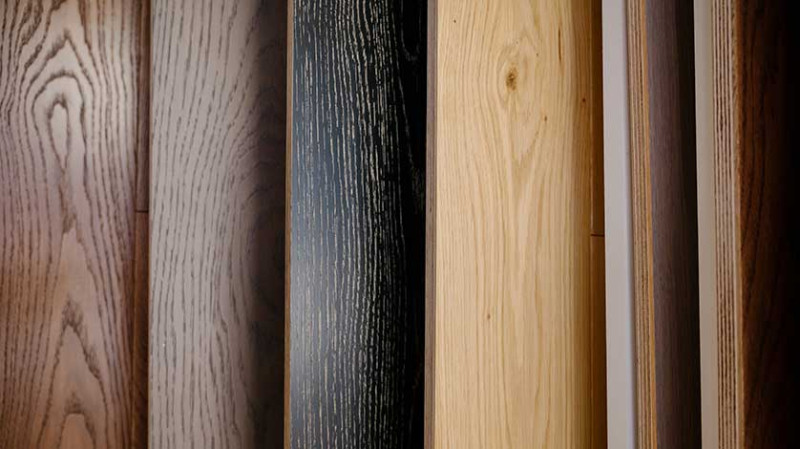
Floors are a major investment in any home or commercial space. Whether it's the sleek appearance of vinyl plank, the timeless elegance of hardwood, or the practicality and affordability of laminate, each flooring type brings something special to your interiors.
However, even the highest-quality flooring can fall victim to scratches over time, from pet claws to furniture movements, or even just daily foot traffic. The good news is that many scratches can be repaired without the need for full floor replacement. In this guide, we're breaking down practical steps to fix scratches in vinyl plank, hardwood and laminate floors, so you can keep your floors looking their absolute best.
Whether you're a DIY enthusiast, a young professional sprucing up your first home, or a seasoned interior designer looking for solutions for your clients, read on to learn what you need to restore your flooring to its former glory.
Fixing Scratches in Vinyl Plank Floors
Vinyl plank flooring has become increasingly popular in UK homes due to its water resistance, affordability, and realistic wood-look aesthetics. While it's generally quite durable, sharp objects and grit can still cause light surface scratches or deeper gouges over time.
Before you try any repairs, clean the area thoroughly using a vinyl-safe cleaner to remove dirt and debris. Dirt in a scratched area can interfere with the repair process and result in a cloudy or uneven finish.
For light scratches, a basic floor polish or vinyl floor restorer can work wonders. These products typically contain a mild solvent and finish that fills in faint scratches and restores the lustre of your floor. Simply apply with a soft microfiber cloth and buff until the shine returns.
Deeper scratches or gouges may require a vinyl repair kit. These typically include putty compounds that you can colour-match to your specific floor shade. Fill the scratch or gouge, smooth it using a plastic applicator, and let it dry. In some cases, you might have to sand the area lightly with fine grit sandpaper and apply a sealant on top for thorough blending.
If the scratch is particularly deep and in a highly visible area, consider replacing the damaged plank altogether. Fortunately, with floating vinyl flooring, individual boards can often be unclipped and swapped with spares without disturbing the rest of the installation.
Fixing Scratches in Hardwood Floors
Hardwood floors bring character and warmth to homes and businesses, but they're also the most vulnerable to visible surface scratches. Tools, pet nails, or dragging furniture are frequent culprits. The steps to fixing hardwood scratches depend largely on how deep the damage is.
For minor scratches on surface-finished (polyurethane-coated) wood, a hardwood floor cleaner followed by a wax stick or wood mark-up pen can camouflage the area. These pens are available in various wood tones, so pick one that matches your floor colour for the best results.
If the scratch penetrates the finish but not the wood underneath, lightly buff the area with fine steel wool (0000 grade) following the grain. After buffing, apply a matching wood stain and top it off with polyurethane to seal and protect the area.
Deep scratches or gouges that expose bare wood will need a more detailed repair. Use wood filler in a shade close to your flooring. Apply with a putty knife, carefully wipe away excess, and let it dry. Then sand lightly and refinish the patch with stain and a coat of polyurethane or oil-based finish depending on your floor's original treatment.
For solid wood floors, if scratches are widespread or too deep, sanding and refinishing the entire surface might be the best solution. This approach allows you to completely reset the look of your flooring. Just make sure you have enough thickness in your boards to handle sanding, a factor especially important for engineered hardwood.
Fixing Scratches in Laminate Floors
Laminate flooring offers great durability at a cost-effective price point and mimics the look of wood or tile, making it a favourite for modern UK homes. However, despite its sturdy top layer, laminate is prone to showing scratches, especially in high-traffic areas.
Unlike hardwood, laminate cannot be sanded down, which limits your options slightly. But for light scuffs and scratches, a laminate repair wax pencil or marker (available in various wood tones at DIY stores) can be very effective. These are especially useful for superficial damage and quick cosmetic touch-ups.
If the scratch is more visible or wider, a laminate floor repair kit might be necessary. These kits come with coloured putties or melted wax compounds you can mix to match your floor tone. Fill the scratch with the putty, let it set, and then buff it gently with a soft cloth. Some kits also include sealing finishes to lock in the repair and provide a slight sheen for blending.
For major damage, plank replacement is often the only viable solution. If your laminate flooring is of the click-lock floating type, it may be possible to lift and replace individual planks rather than replacing an entire room. Always keep a few spare boards on hand left over from your original installation for moments like these.
Preventive maintenance plays a huge role in keeping scratches at bay. Use felt pads under furniture legs, place area rugs in busy zones, and keep pet nails trimmed to minimise surface damage over the long term.
Choosing the Right Repair Products
Whether you're touching up vinyl, hardwood, or laminate, having the right tools on hand will make all the difference. Here's a brief comparison of common repair products and when to use them:
| Product Type | Best For | Suitable Flooring |
|---|---|---|
| Touch-up Marker / Wax Stick | Light scratches, minor scuffs | Hardwood, Laminate |
| Vinyl Repair Kit | Deeper gouges or surface dings | Vinyl Plank |
| Wood Filler + Stain | Deep scratches, exposed wood | Hardwood |
| Floor Restorer Polish | Overall surface dullness or light wear | Vinyl, Hardwood |
| Laminate Repair Kit | Medium scratches and patching | Laminate |
Preventing Future Scratches
While repairing scratches is extremely helpful, prevention will always be better than cure. Here are some simple measures you can take to keep your floors in excellent condition:
- Use felt pads or glides on the bottom of all furniture legs.
- Install area rugs or runners in high-traffic areas like hallways and entryways.
- Keep shoes, especially those with heels or hard soles, off your floors.
- Sweep or vacuum regularly to remove grit and dirt that could scratch surfaces.
- Trim your pets' nails regularly to reduce scratch risk.
- Use mats under pet feeding bowls to prevent food spills and water damage.
By taking a little time to maintain and care for your flooring properly, you not only extend its life but also enhance the overall look and value of your space.
Final Thoughts
Scratched floors can be frustrating, but they're rarely a reason to panic. With the right techniques and products, many of these imperfections can be easily fixed, transforming a worn-out surface into something beautiful again.
Whether you're working with timeless hardwood in a listed cottage, stylish vinyl planks in a new build flat, or practical laminate for a rental property, you now have the tools you need to repair and protect the heart of your home. Don't forget to stock up on repair kits and accessories tailored to your specific flooring type!
Looking to upgrade or replace flooring altogether? Explore our range of vinyl, laminate and hardwood solutions designed for stylish UK homes. Contact our team of flooring experts for advice tailored to your space.





